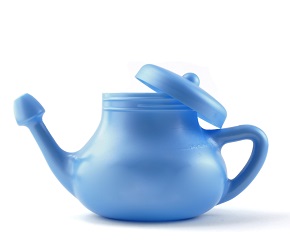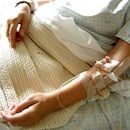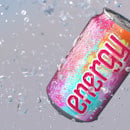
How Neti Pots Can Offer Relief
Healthcare professionals often get questions from patients about the use of neti pot for nasal symptoms. The neti pot is both a device and a technique used for nasal irrigation (flushing or lavage) of the nasal cavity. Nasal lavage is promoted as an adjunct for the management of allergic rhinitis, sinusitis, the common cold, post-nasal dripand other conditions. The neti pot device resembles a small tea pot. Nasal lavage is used to flush out the mucus, irritants and allergens from the nasal muscosa, to keep the area moisturized and improve nasal hygiene. There is little risk with using nasal irrigation when prepared and applied according to labeled instructions. However, patients are at an increased risk of developing an infection if they use tap water if the technique is not performed correctly.
Studies have shown that nasal irrigation benefits patients with allergic rhinitis. Children with allergies who used hypertonic saline nasal irrigation three times a day had significantly reduced symptoms after 3-6 weeks of treatment, compared to no treatment (Garavello et al., 2003). Other studies have shown that nasal irrigation is an effective adjunct for acute sinusitis and significantly improved symptoms compared with the placebo group. In these studies, there has been no evidence of any harmful side effects. Common complaints included nasal burning, irritation and nausea. However, there have been some recent reports of infection from using contaminated tap water.
When using nasal irrigation, patients are advised to use boiled, bottled or distilled water. Using regular tap water may carry an increased risk of the water possibly being contaminated with the amoeba Naegleria fowleri. If exposed to this amoeba, patients can contract a fatal disease called primary amebic meningoencephalitis (PAM). Although this infection is rare, amoeba-tainted tap water used in sinus irrigation is suspected in the recent deaths of two people in Louisiana though some have questioned the causal link. Also in Karachi, Pakistan, 12 of 13 patients that passed away from PAM had performed ritual ablution, or rinsing of the nasal passages with tap water (Shakoor et al., 2011).
Although the correct preparation for irrigation of nasal passages may be an inconvenience for patients, using tap water may be a potential health hazard. The importance of using distilled, previously boiled, or otherwise sterilized water should be stressed to patients who ask about nasal irrigation. Lastly, patients should be taught the correct, tilted position of the head and instructed on how to correctly use the neti pot device itself in order to assure safety.
Biography:
Darrell Hulisz, currently practices as a clinical pharmacist with University Hospitals of Cleveland, Family Medicine Residency Program, where he works in consultation with family physicians, both on inpatient and outpatient services. He is a webinar speaker at RxSchool.com, where he presents live courses and contributes to the site’s CE curriculum.
References:
Garavello W., Di Berardino F., Romagnoli M., et al. (2005). Nasal rinsing with hypertonic solution: an adjunctive treatment for pediatric seasonal allergic rhinoconjunctivitis. Int Arch Allergy Immunol 2005;137:310-4. Garavello W., Romagnoli M., Sordo L., et al. (2003). Hypersaline nasal irrigation in children with symptomatic seasonal allergic rhinitis: a randomized study. Pediatr Allergy Immunol 2003;14:140-3. Harvey R., Hannan S.A., Badia L., Scadding G. (2007) Nasal saline irrigations for the symptoms of chronic rhinosinusitis. Cochrane Database Syst Rev 2007;18(3):CD006394. Papsin B., McTavish A. (2003). Saline nasal irrigation: its role as an adjunct treatment. Can Fam Physician 2003;49:168-73. Shakoor S., Beg M.A., Mahmood S.F., et al. (2011). Primary amebic meningoencephalitis caused by Naegleria fowleri in Karachi, Pakistan. Emerg Infect Dis. 2011;17:258-261.




